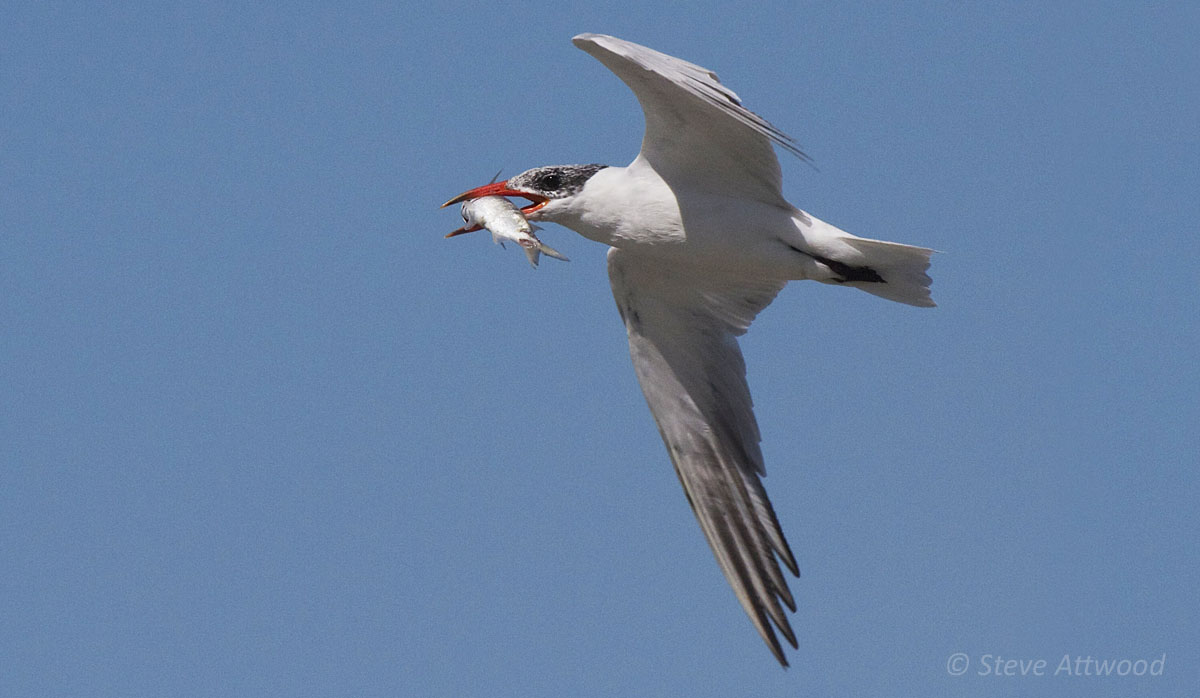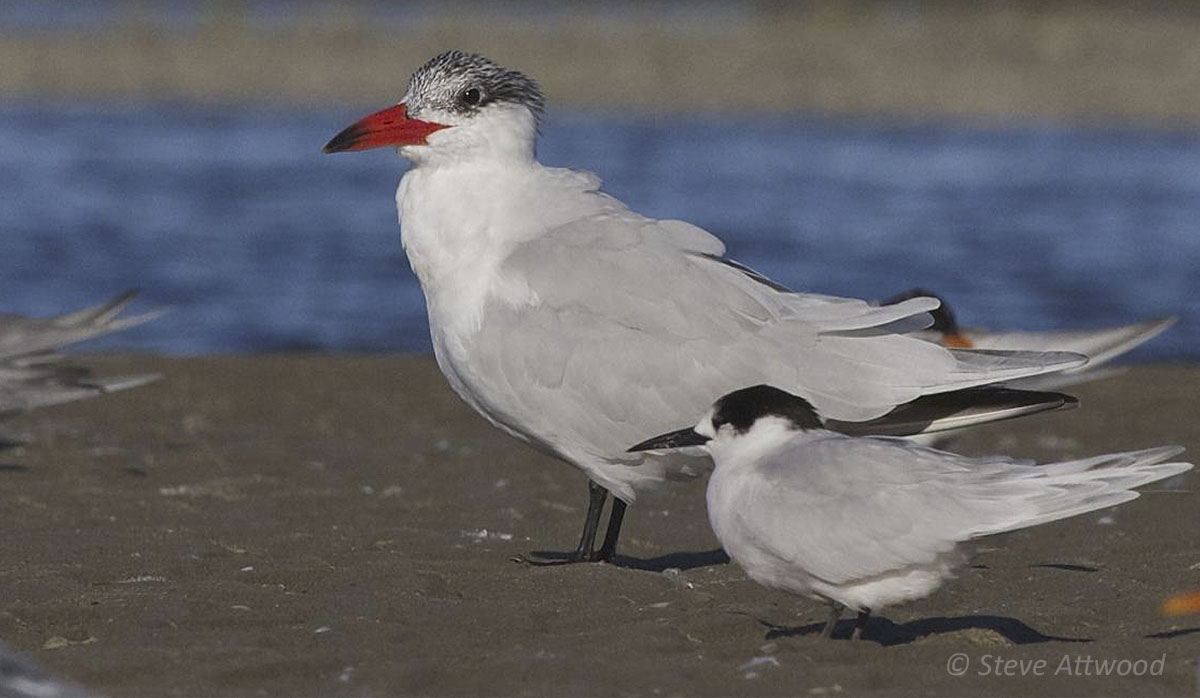Caspian tern | taranui
Status: Nationally Vulnerable

Regularly seen inland along Canterbury braided rivers as well as coastal areas, although only occasionally breeds on braided riverbeds (distribution map).
Description
Seen in many parts of the world, the Caspian tern (Hydroprogne caspia, formerly Sterna caspia*) | taranui is uncommon in New Zealand, with an estimated population of 1300-1400 breeding pairs. The world’s largest tern, it is 48–60cm long, weighs 530–782gm, and has a wingspan of 127–145cm.
Adult birds have black legs and a long thick red-orange bill with a small black tip. Their head is white with a black cap (during breeding season) and white neck, belly and tail. The upper wings and back are pale grey; the underwings are pale with dark primary feathers. In flight, the tail is less forked than other terns and wing tips black on the underside. In winter, the black cap is streaked with a white forehead. They breed in large colonies, alone, and with other birds, mainly on open coastal shell banks and sandspits, and occasionally on braided riverbeds and at inland lakes.

More information
- NZ Birds online (includes photos, sounds)
- iNaturalist
- Birdlife International (includes Google distribution map)
- NZ Birds
Conservation efforts
No specific conservation activities, although are likely to benefit from activities to protect other braided river birds.
Research
- 2008: Bell & Bell Population numbers of the Caspian tern (Stena caspia) in New Zealand. Notornis 55:84-88 (Open access PDF)
- 2005: Bridge et. al. A phylogenetic framework for the terns (Sternini) inferred from mtDNA sequences: implications for taxonomy and plumage evolution. Molecular Phylogenetics and Evolution 35: 459–469
- See also Ecology/further information and references
